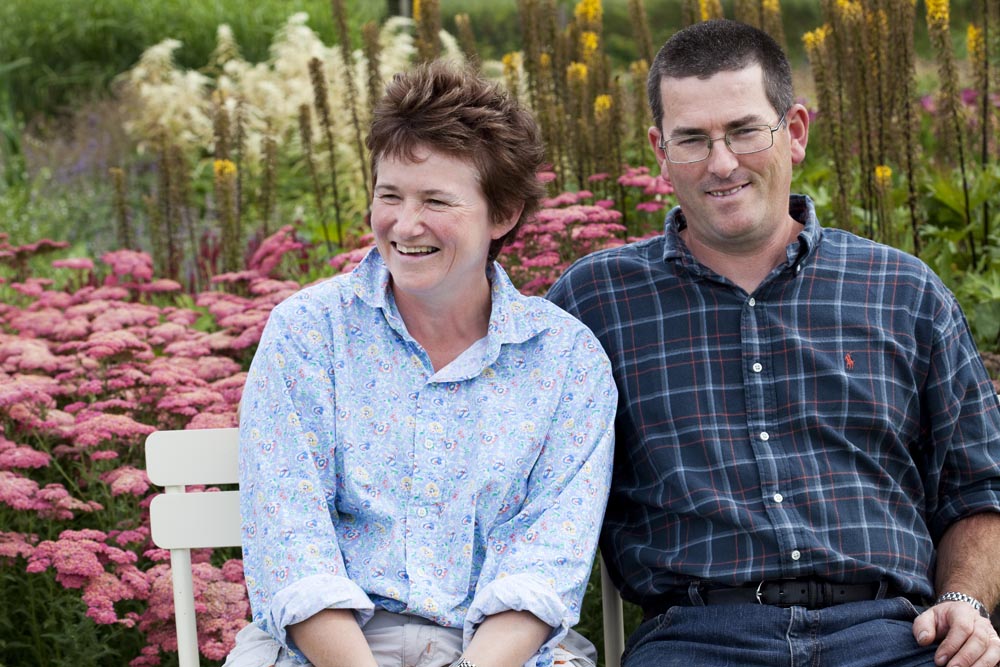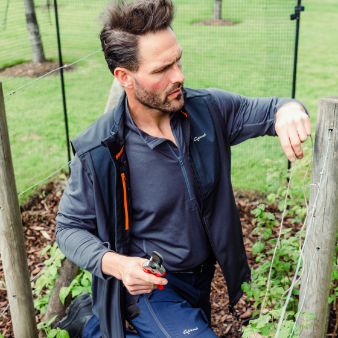Q&A with the McBrides of the Sussex Prairie Garden

Paul and Pauline McBride designed and created this garden from scratch. We first asked them:
What was the thinking behind the design?
The overall design is a spiral intersected by the curvaceous hornbeam hedge feature which rolls down the centre of the garden echoing the sinuous curves of the South Downs. It was important that the garden should blend sympathetically into the landscape and this strong backbone does that.
How did you go about selecting your plants?
The plants selected for the project had to be both prairie in nature and style. On the one hand, working hard in form, structure and seed head, and on the other, being capable of working effortlessly in large groupings to give impact and a dynamic sense of movement and mass. As well as in their glory times, our plants have to look good in the death zone of winter.
Tell us about the preparation needed for the beds and how you maintain it? (Irrigation and slug control!)
The dramatic arc-shaped beds were created with copious amounts of stick and string and a judicious amount of shouting at each other - taking us back to our school day geometry. The beds were weed-killed three times, shallow ploughed and then large amounts of recycled garden waste compost was rotovated into the borders. The garden was planted with the help of sixty of our friends and family in 2008 and then a regular annual mulching programme began. Watering, when required, is done the old-fashioned way by hose.
What would be your key plants for creating a prairie effect in a small garden?
A mix of 70% flowering perennials and 30% grasses would be the ideal mix groups of at least three to five to give impact. For early summer I’d suggest Euphorbia palustris, Amsonia hubrichtii, Baptisia australis, Dianthus carthusianorum and Briza maxima. For mid-summer, Echinacea purpurea, Eryngium yuccifolium, hemerocallis, Lythrum virgatum, Sporobolus heterolepis and Salvia ‘Blue Enigma’ is hardy and beautiful. For late summer/ autumn, Rudbeckia goldsturm, Symphyotrichum novi-belgii ‘Vasterival’ and then the big miscanthus, panicum and molinia grasses come into their own.
The garden is open Wednesday to Sunday, 1pm to 5pm, until 10th October 2021.







